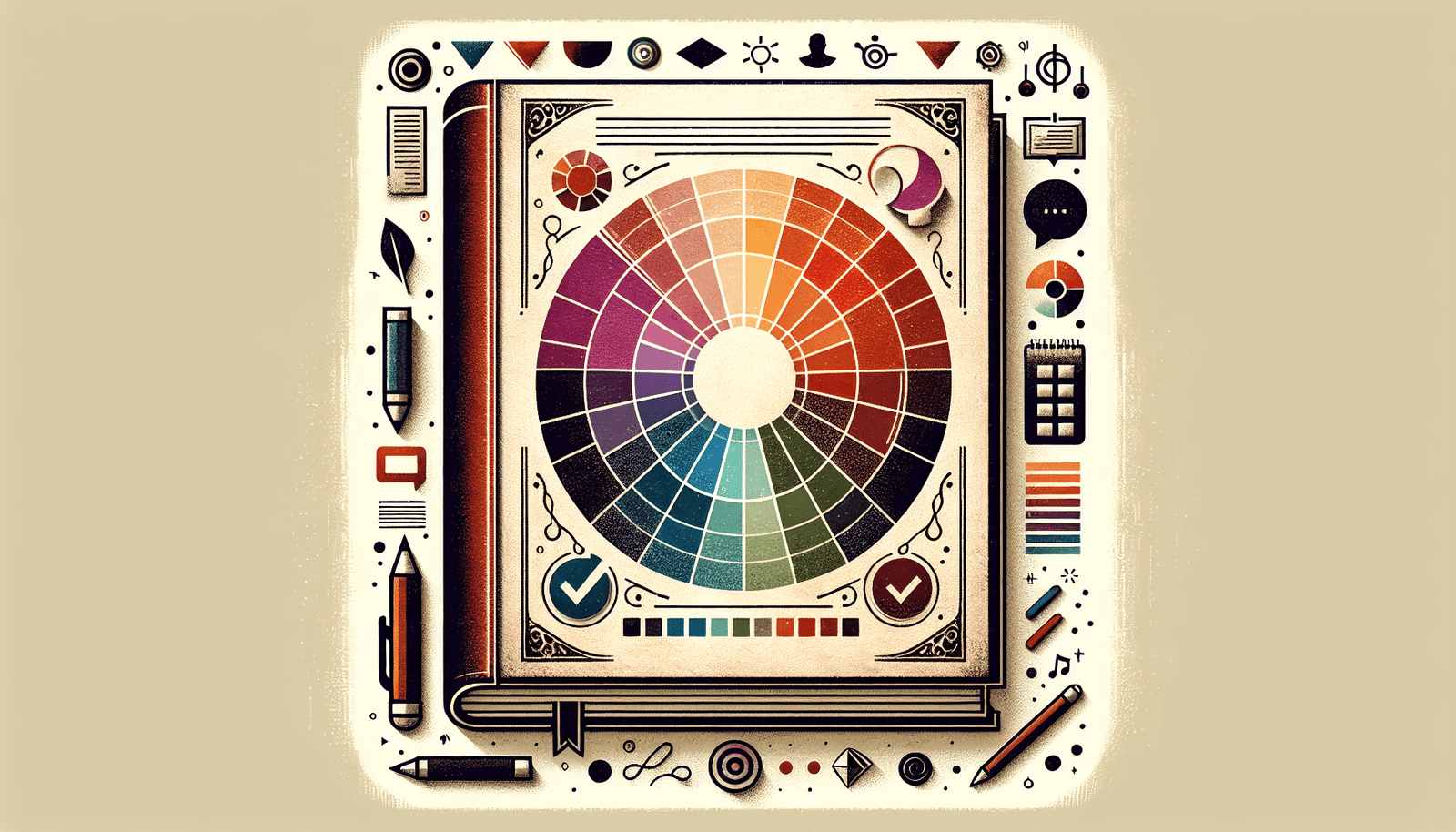In “How Can Reader Polls And Surveys Revolutionize Your Book Cover Design?” you’ll uncover the transformative power of engaging your audience in the creative process. By tapping into the preferences and insights of your readers through well-crafted polls and surveys, you can design book covers that not only captivate but also resonate deeply with your target market. This approach not only increases reader involvement and loyalty but also enhances the market appeal of your book, creating a win-win scenario that boosts both your creative satisfaction and sales potential. Dive in to see how this strategy can turn your book covers into unforgettable visual experiences.
Have you ever wondered how you can ensure that your book cover design really captures the attention of your target audience? Chances are, you’ve stared at a variety of design options, feeling a mix of excitement and uncertainty. What if the secret to nailing that perfect cover lies in the collective insight of your future readers?
That’s right! Reader polls and surveys can be your golden ticket to crafting a book cover that not only stands out but also deeply resonates with your audience. This article will delve into how reader polls and surveys can truly revolutionize your book cover design.
What Are Reader Polls and Surveys?
Reader polls and surveys are tools that allow authors, publishers, and marketers to gather feedback from readers about their preferences and opinions. Think of them as mini research projects—only more fun and incredibly insightful.
The Basics
In a reader poll, you ask a series of multiple-choice questions where readers can choose from various options. Surveys, on the other hand, often contain a mix of multiple-choice questions, open-ended questions, and rating scales to dive deeper into the readers’ preferences and thoughts.
Why Use Them?
These tools give you direct access to the minds of your readers. You’re no longer shooting in the dark; you have precise, actionable feedback that can dramatically improve the quality and appeal of your book cover.
Why Is the Book Cover So Important?
Before we get into how reader polls and surveys can help, let’s briefly talk about why book covers matter so much. Your book cover is essentially the first impression of your book.
The Window to Your Book’s Soul
Your book cover acts like a billboard or an invitation. A well-designed cover can intrigue potential readers, giving them a reason to pick your book off the shelf (or click on it online) and explore further. In contrast, a poorly designed cover can easily be overlooked.
Trust and Credibility
A professionally designed cover signals quality and care, making it easier for readers to trust that the content inside is equally valuable. Conversely, a shabby cover can dissuade even the most interested potential reader.
Genre Signaling
Your cover should also indicate what genre your book falls into. This helps to attract the right audience from the get-go. For instance, a thriller book should have an entirely different design than a romantic novel.
How Reader Polls and Surveys Help in Design Decision Making
Now that we understand why a book cover is crucial, let’s explore how reader polls and surveys can help you nail that perfect design.
Gathering Baseline Preferences
The first step is to understand the baseline preferences of your audience. You can ask questions like:
- What colors do you associate with thrillers/romance/mystery etc.?
- What type of imagery (abstract, realistic, illustrative) do you prefer?
- Do you prefer minimalistic designs or more detailed ones?
Testing Multiple Designs
Once you have a few design options, you can present them to your readers via a poll or survey. This helps you see which designs resonate more. You could ask:
- Which book cover design would make you more likely to pick up the book?
- Rate each design on a scale of 1-10.
Open-Ended Feedback
Surveys are excellent for gathering open-ended feedback. Ask your readers why they chose a particular design or what elements they particularly liked or disliked. This qualitative data can provide you with nuanced insights that numbers alone might miss.
Demographic Insights
Your audience might have different preferences based on their age, gender, location, etc. By including demographic questions, you can see if certain designs appeal more to specific segments, allowing for more targeted marketing.
Fine-Tuning the Final Design
Based on the feedback from your reader polls and surveys, you can make final adjustments to your chosen design. This could involve tweaking colors, fonts, imagery, or even layout elements.
Practical Steps to Implement Reader Polls and Surveys
Now, let’s get into the nitty-gritty of actually implementing these tools.
Choose a Platform
Several platforms can help you create and distribute polls and surveys. Some popular ones include:
- Google Forms
- SurveyMonkey
- Typeform
- Facebook Polls
- Instagram Stories (for quick, informal polls)
Crafting the Questions
Your questions should be clear, concise, and designed to yield actionable insights. Avoid leading questions that might bias the responses. For example, instead of asking, “Don’t you think Cover A is better?” you could ask, “Which cover do you prefer and why?”
Distribution
Once your poll or survey is ready, distribute it through multiple channels. Here are some options:
- Social media platforms
- Newsletter emails
- Author websites or blogs
- Online reader communities or forums
Analyzing the Data
Collecting the data is only half the battle; you need to analyze it as well. Look for trends and common themes. What elements consistently receive positive feedback? What are the most common criticisms?
Iterative Process
Design is an iterative process. Don’t hesitate to go through multiple rounds of feedback and revisions. The more you refine based on reader input, the stronger your final design will be.
The Psychology Behind Reader Polls and Surveys
Understanding why reader polls and surveys work can help you use them more effectively.
Ownership and Involvement
When readers contribute their opinions, they feel a sense of ownership and involvement in your project. This emotional investment can lead to increased anticipation and advocacy for your book.
Social Proof
Seeing that other readers have weighed in can influence opinions. It creates a sense of community and shared interest, which can bolster the credibility of your book and your brand.
Commitment and Consistency
When people commit to an opinion in a poll or survey, they are more likely to act consistently with that commitment. If they chose a particular cover as their favorite, they are more likely to buy the book when they see that cover.
Real-World Examples
Let’s look at some real-world examples of how reader polls and surveys effectively improved book cover designs.
Case Study 1: A Fictional Romance Novel
Author Jane Doe wanted to determine the best cover for her upcoming romance novel. She presented three different designs to her readers via a SurveyMonkey poll. The responses indicated a strong preference for one particular design, which featured softer colors and an embrace between the protagonists. The open-ended feedback highlighted that these elements evoked the romantic and emotional tone of the story, leading Jane to choose the design that ultimately became her bestseller’s cover.
Case Study 2: A Non-Fiction Self-Help Book
John Smith, a non-fiction author, was torn between a minimalist design and a more detailed, illustrative cover for his new self-help book. He conducted an Instagram poll asking his followers to vote on their preferred design. The minimalist design won by a landslide. Additional feedback showed that readers felt the simpler design was more professional and aligned with the clarity and straightforward advice they expected from a self-help book.
Overcoming Challenges
Using reader polls and surveys is not without its challenges. Here are some common obstacles and how to overcome them.
Bias in Responses
Sometimes, readers might give answers that they think you want to hear. To mitigate this, ensure your questions are neutral and unbiased.
Inadequate Sample Size
A small sample size might not give you accurate insights. Aim to get responses from a diverse and representative group of your target audience.
Integrating Feedback
It can be challenging to integrate diverse opinions into a cohesive final design. Focus on the most critical and common pieces of feedback and remember that it’s impossible to please everyone.
Best Practices for Maximizing the Effectiveness
Here are some best practices to ensure you get the most out of your reader polls and surveys.
Be Respectful of Their Time
Keep your surveys short and to the point. Respect your readers’ time, and they will be more likely to participate and provide thoughtful responses.
Incentivize Participation
Consider offering a small incentive for completing the survey, such as a free e-book or entry into a giveaway. This can increase participation rates.
Close the Loop
Let your readers know how their feedback impacted your final decision. Not only does this show your appreciation, but it also builds trust and loyalty.
Maintain Open Communication
Stay transparent about the process. If you make significant changes due to feedback, inform your audience. It makes them feel valued and more involved.
Reader Polls and Surveys as Ongoing Tools
Remember, reader polls and surveys aren’t just useful for book cover design. They can be invaluable tools throughout your writing and publishing process.
Blurb and Title Testing
Just like book covers, your book blurb and title can benefit from reader feedback. Test different versions to see which ones resonate most.
Story Elements
If you’re writing a series, involving your readers in decisions about plot directions or character development can make them feel more invested.
Marketing Strategies
Understand what marketing messages and platforms your readers prefer. This will help you craft more targeted and effective marketing campaigns.
Conclusion
Reader polls and surveys are powerful tools that can revolutionize your book cover design. They provide valuable insights, create a sense of involvement and ownership among your readers, and help ensure that your cover resonates with your target audience.
By understanding the importance of your book cover, implementing effective polls and surveys, and analyzing the feedback to make informed decisions, you can significantly increase your book’s chances of standing out and succeeding in a crowded market.
So, the next time you find yourself stuck trying to decide on a book cover, remember that your readers are more than just passive consumers—they can be your most invaluable advisors. Happy designing!
And if you find yourself with any questions or needing more tips, don’t hesitate to reach out. Your readers—and your success—are worth it!



